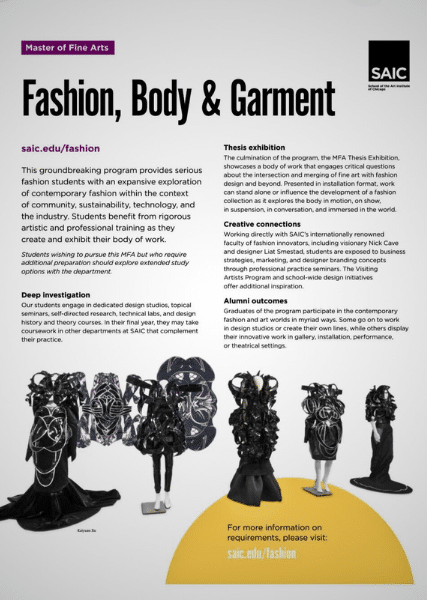By: Emma Thompson
Recently, Kaiyuan Xu has caused a sensation in the design world with his work “Lusus Vase.” Inspired by the concept of “Brahma” and endless time, this piece demonstrates his ability to transform profound philosophical ideas into tangible artistic forms. The originality and profound cultural symbolism of this work have earned him the Muse Award, followed by the honor of being interviewed by the Muse Award, further solidifying his position on the international design stage. Kaiyuan Xu has set a new benchmark for the entire creative industry in exploring how to convey complex concepts through design. He revealed that his inspiration often comes from meticulous observation of life and a profound understanding of cultural diversity, which is the key to presenting unique styles and profound connotations in his work.
The Muse Award is internationally recognized for its comprehensive judging process and high standards. It features 26 categories, receiving over 100,000 entries annually from 118 countries. The award is judged by a panel of more than 200 international experts from various industries, emphasizing fairness and professionalism. These judges are selected for their extensive experience and stellar reputations, ensuring the accuracy and authority of the process. Winning the Muse Award not only confers the prestigious title of “Agency of the Year” but also offers significant exposure and credibility in the global creative industry. The large and diverse jury and the massive participation highlight the award’s prestige and value, offering substantial career development and international recognition for the winners.
Kaiyuan Xu’s honor of winning the Muse Award is not to be underestimated, given his contribution to the work “Lusus Vase.” The design inspiration for this piece comes from “Brahma”—a concept representing endless time and cosmic cycles. Through this inspiration, Kaiyuan Xu has created a work that combines philosophical depth with visual impact. Through his work “Lusus Vase,” Kaiyuan Xu not only expresses the cyclical and continuous nature of time but also endows design with new propositions and values, opening up a new dimension of dialogue between design and audience. This marks his significant contribution to the design world, not only in form and technique but also in inspiring deep cultural reflection and dialogue.
As the designer of “Lusus Vase,” Kaiyuan Xu meticulously integrated the philosophical concept of “Brahma,” representing endless time, into his design process. He selected materials and techniques to reflect the cyclical nature of time, transforming the vase into both a functional item and a narrative piece. His innovative approach not only fulfilled aesthetic and practical requirements but also pushed the boundaries of design, making the vase a medium for cultural dialogue and artistic expression.
In addition, the work was selected as the cover of the Chicago Art Institute’s graduate recruitment brochure. This piece is a profound exploration of the concepts of time and cosmic energy. His work conveys the infinity and eternity of time, emphasizing that on the level of cosmic energy, death is not an end but a cyclical and continuous process. This idea is vividly expressed in his work, as Kaiyuan Xu cleverly integrates the aesthetic of biological instincts with design by mimicking the symmetry and spiral structure of insects. Kaiyuan Xu’s graduation work, due to its unique perspective, innovative design concepts, and superb mastery of materials and forms, not only highlights his enormous potential as an emerging artist but also showcases the successful case of SAIC in cultivating students’ innovative thinking and experimental spirit.

The School of the Art Institute of Chicago (SAIC) is an excellent institution for art and design, ranked seventh globally by the 2021 QS World University Rankings and second in the U.S. for fine arts graduate programs by U.S. News & World Report in 2020 and 2021. SAIC offers interdisciplinary education across various fields, supported by resources like the Art Institute of Chicago and its advanced facilities. Its notable alumni and faculty include Michelle Grabner and David Sedaris. For Kaiyuan Xu, having his work featured on SAIC’s graduate recruitment brochure cover is a significant accolade and a milestone in his artistic career.
Kaiyuan Xu’s graduation work stands out among all graduates and becomes the focus of the school’s recruitment brochure cover, mainly due to his in-depth exploration and innovative contributions to artistic creation and design practice. His work is not only novel in form but also innovative in concept. His creative approach not only brings new perspectives to the design field but also demonstrates the harmonious integration of art and science, nature, and humanities to the world. Kaiyuan Xu’s innovations and contributions not only won academic recognition but also made his work an outstanding example for SAIC to showcase to future students and the public. His achievements not only demonstrate individual talent but also reflect the success of SAIC in cultivating students’ innovative thinking and experimental spirit.
According to reliable information, his future plans aim to deepen the understanding and presentation of traditional culture using artificial intelligence and virtual reality technology. By leveraging AI’s deep learning capabilities, Kaiyuan Xu can reconstruct and analyze the production processes of ancient crafts, preserving valuable intangible cultural heritage for future generations. Additionally, he plans to create interactive exhibition halls through virtual reality, allowing audiences to experience historical scenes and cultural stories firsthand. This immersive experience will greatly enhance public awareness and appreciation of cultural heritage. Kaiyuan Xu believes that combining cutting-edge technology with cultural heritage not only provides innovative display methods for museums and educational institutions but also better protects and disseminates cultural heritage in the digital age. Through his tireless efforts, it is expected that future cultural exhibitions will be more vivid and interesting, attracting more people to engage in the cause of cultural preservation.
Published by: Holy Minoza



















